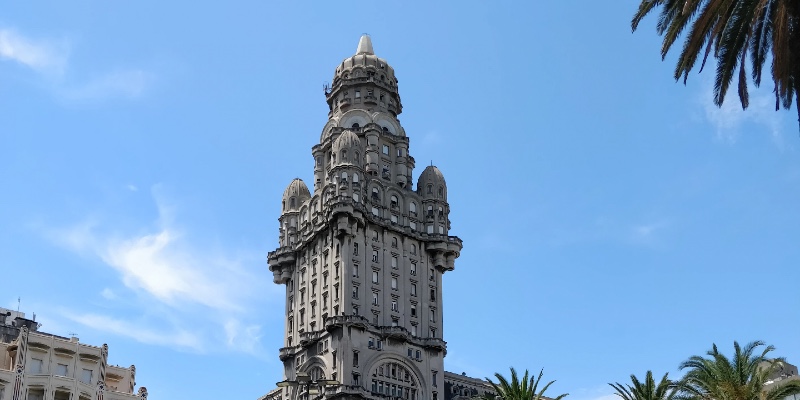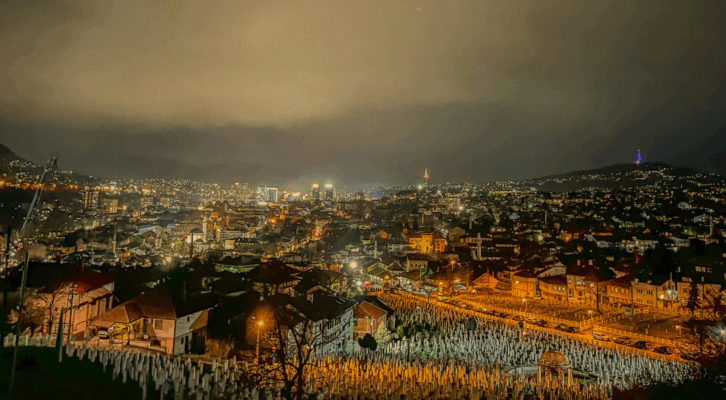Montevideo – the capital and largest city of Uruguay. Home to a million and a half people – about a third of Uruguay’s total population. Sitting majestically on the southern coast of the country, on the northeastern bank of the Rio de la Plata – the River Plate. So often overlooked as one of Latin America’s most stunning cities. Portuguese, then Spanish and a legacy of sumptuous art-deco European architecture. A city that filled up with Spaniards and Italians before World War Two, but also a city that has in the post-war world seen its share of political violence. So what have crime writers made of this history?
Let’s kick off with Rosende Mercedes’s Ursula Lopez series. Mercedes is a Montevideo lawyer and a journalist as well as a prize-winning author in Uruguay. And, thanks to Bitter Lemon Press, we have her new series. It starts with Crocodile Tears (2021) when we meet Ursula Lopez, an amateur criminal with an insatiable appetite, along with her her rival, Captain Leonilda Lima and Ursula’s compadre Diego, a not-so-great kidnapper. This seemingly classic lowlife crime story has a powerful message: never, ever underestimate the women. Ursula returns in The Hand That Feeds You (2023) and the attempted robbery of an armoured car in the back streets of Montevideo. But Ursula Lopez and her reluctant companion Diego manage to snatch all the loot the robbers failed to grab. Now though the robbers are after her, as is her sister – who happens to be police. Both books take us on a trawl through Montevideo’s Old Town, with its dark alleys, crumbling facades, and watchful residents.
Ricardo Piglia’s Money to Burn (1997) is based on real events from the 1960s. It’s more about hiding out and the lead-up to the final shoot-out than the bank robbery at the start. After robbing a bank in Buenos Aires, Dorda and Brigone, escape with the money over the Rio de la Plata. They bolthole in Montevideo but eventually 300 armed police surround their hideout. Local reviewers claim this is one of the best recreations of the Argentina and Uruguay of the 1960s.
A few other Montevideo-set crime novels…
- Jerold Last’s The Roger and Suzanne mystery novels now number 21 books, all set in South America. The first in the series, The Ambivalent Corpse (2011) opens with parts of a dismembered corpse littering a rocky stretch of beach in Montevideo, apportioned equally between the Memorial to a German cruiser sunk in World War II and the Memorial to Jews killed in the Holocaust. Because of the murder victim’s strategic location shared between two antithetical monuments, the Uruguayan press names her “The Ambivalent Corpse”. Private detective Roger Bowman and his girlfriend, scientist Suzanne Foster, find themselves traveling through Uruguay to solve the case. Lots of Uruguay and lots of South American food and wine too.
- Roger and Suzanne return to Montevideo in their third outing, The Matador Murders (2012) where one of their friends is suspected of murder. They unsuspectingly walk into the middle of a gang war, take a side trip to Chile to learn all about the local crime scene and end up back on the streets of Montevideo to catch a killer.
- We don’t include enough seafaring novels in this column but JH Gelernter’s The Montevideo Brief (2023) features Captain Thomas Grey, agent of His Majesty’s Secret Service, in 1804 on an espionage mission. He knows that a Spanish warships will depart Montevideo carrying 2,000 tons of gold. When the Spanish get the cold they can afford to unite with France and then diabolically both declare war on Britain. “Patrick O’Brien meets James Bond” says the publisher’s blurb. This is the first of three Captain Thomas Grey high seas adventures.
- JA Jernay’s The Uruguay Amethyst (2023) is the second in a series of nine Ainsley Walker Gemstone Travel Mystery, a collection of YA aimed whodunits. Amateur gemstone detective Ainsley Walker accepts an offer from an elderly art dealer to travel to Uruguay to buy a priceless treasure. His caper takes him from historic streets of Montevideo to beef ranches and then elite beach resorts.
- Described as an ingenious cross between Isabel Allende and Agatha Christie, Annamaria Alfieri’s Invisible Country (2022) imagines a South America devastated by a war started by Paraguay against Argentina, Brazil, and Uruguay. Ninety percent of the males between the ages of eight and eighty have died. Food is scarce. In a small village Padre Gregorio advises the women of his congregation to abandon the laws of the church and get pregnant by what men are available. As he leaves the pulpit, he discovers the murdered body of Ricardo Yotté, one of the most powerful men in the country. It’s an interesting cast of suspects – Eliza Lynch, a former Parisian courtesan now a dictator’s consort, Comandante Luis Menenez, local representative of the dictator, and a Brazilian soldier who has secretly taken up with a village girl.
Uruguayan writers often seem to specialise in rather existential, often Kafkaesque writing – perhaps a result of having lived with either the reality of seemingly almost constant threat of dictatorship and military coup. Montevideo-born Fernanda Trías (Winner of the Uruguayan National Literature Prize for Fiction, the Bartolomé-Hidalgo Fiction Prize, and the Sor Juana Inés de la Cruz Literature Prize.) is not a crime writer in the classic sense but in The Rooftop (2021) Clarais trying to protect her beloved ones from outside threats. Rooftop becomes a claustrophobic, Kafkaesque novel about freedom, and also about fear, violence, motherhood, and loss.
Again Trías’s Pink Slime (2023) is not a crime novel but is about a port city is in the grips of an ecological crisis. The river has filled with toxic algae, and a deadly ‘red wind’ blows through the streets; much of the coast has been evacuated as the wealthy migrate inland to safety, leaving the rest to shelter in abandoned houses as blackouts and food shortages abound. How people react to such a dystopian nightmare is the heart of the novel.
And finally, Juan Carlos Onetti, a Uruguayan writer who should be better known internationally. Onetti (his rather strange surname is derived from O’Nety of Irish or Scottish origin), born in Montevideo, specialised in the short story form. Onetti worked for the famous weekly Uruguayan newspaper Marcha but was writing fiction all the time too and was awarded the Uruguay National Literature Prize in 1962. He was forced to leave Uruguay for Spain for a time after opposing the military dictatorship and being imprisoned a mental institution.
Unfortunately not all his work is translated into English. Still, A Dream Come True (in English, 2019) includes several detective-based short stories that mix existentialism with social critique and span both Montevideo and the life in Uruguayan villages. Though extremely hard to find other translation include A Grave with No Name (1959), The Shipyard (1961), Body Snatcher (1964) and Let the Wind Speak (1979).

















